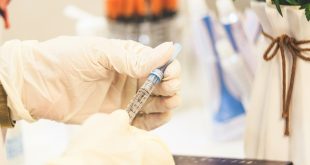Introduction
Nanotechnology, the manipulation of matter at the atomic or molecular scale, has made significant strides across various fields, including medicine, electronics, and agriculture. In plant protection, nanotechnology is emerging as a transformative tool for improving crop resilience, enhancing pest control, and reducing the use of harmful chemicals. With its unique properties, such as increased surface area, enhanced reactivity, and the ability to deliver substances precisely to target areas, nanotechnology offers numerous potential applications for plant protection. This article explores the role of nanotechnology in plant protection, focusing on its applications, benefits, challenges, and future prospects.
What is Nanotechnology in Plant Protection?
Nanotechnology involves the creation and use of materials, devices, and systems with novel properties at the nanoscale (1 to 100 nanometers). In the context of agriculture, nanotechnology has applications in pest management, disease control, soil health, and nutrient delivery. The primary advantage of nanomaterials is their ability to interact with plants and pests at the molecular or cellular level, providing more efficient and sustainable solutions for crop protection.
Use of nanotechnology in plant protection involves the use of nanoparticles, nanomaterials, and nanodevices to enhance the efficacy of pesticides, fungicides, and fertilizers while minimizing their environmental impact. These advancements are enabling more targeted and controlled delivery of active ingredients, reducing waste, and improving the overall sustainability of agricultural practices.
Applications of Nanotechnology in Plant Protection
Nanopesticides and Nanofungicides
One of the most prominent applications of nanotechnology in plant protection is the development of nanopesticides and nanofungicides. Conventional pesticides often have broad-spectrum activity, which can harm non-target organisms, including beneficial insects and soil microorganisms. In contrast, nanopesticides can be designed to target specific pests or pathogens with high precision.
Nanoparticles can encapsulate active ingredients, protecting them from environmental degradation, enhancing their stability, and improving their release profiles. Additionally, the small size of nanoparticles allows for better penetration into plant tissues, increasing the efficiency of pest and disease control. For example, silver nanoparticles have shown antimicrobial properties against fungal pathogens, while copper nanoparticles have been tested as a potent fungicide with reduced toxicity to non-target species.
Nano-encapsulation for Controlled Release
Nano-encapsulation refers to the process of enclosing active substances in a nanomaterial shell, which can control the release of these substances over time. This method is particularly useful for the controlled delivery of pesticides, fertilizers, and herbicides. Nano-encapsulation enhances the bioavailability of these substances, ensuring that they remain active longer and are absorbed more efficiently by plants.
For instance, nano-encapsulated pesticides can be delivered in a sustained release manner, reducing the frequency of application and minimizing the environmental impact of pesticide runoff. Moreover, controlled release systems can reduce pesticide residues on crops, ensuring safer food products.
Nanomaterials for Disease Detection and Monitoring
Nanotechnology can also be used for early disease detection and monitoring in plants. Nanosensors, capable of detecting specific plant pathogens or environmental stressors, offer a rapid and non-invasive means of diagnosing diseases before they spread. These sensors can be integrated into portable devices or field-based monitoring systems, allowing farmers to detect potential threats and take action before significant crop damage occurs.
Nanomaterials, such as carbon nanotubes and quantum dots, can be functionalized to bind to specific pathogens or their biomarkers, emitting detectable signals when an infection is present. This enables real-time monitoring and ensures that plant protection measures are applied more efficiently and in a timely manner.
-
Nano-fertilizers for Improved Nutrient Delivery
Nano-fertilizers are a growing area of research in plant protection. These fertilizers use nanomaterials to enhance the uptake and efficiency of essential nutrients by plants. Traditional fertilizers often suffer from low nutrient use efficiency, leading to environmental pollution and excessive nutrient runoff. Nano-fertilizers, on the other hand, have the potential to improve nutrient absorption by plants, leading to healthier crops and reduced environmental impact.
For example, nanoscale fertilizers can be engineered to release nutrients slowly over time, preventing leaching and ensuring that plants receive a steady supply of nutrients. Nanomaterials can also improve the solubility and stability of fertilizers, making them more bioavailable to plants.
Benefits of Nanotechnology in Plant Protection
- Targeted Delivery and Precision Agriculture: Nanotechnology enables more precise delivery of plant protection products, ensuring that pesticides, fungicides, and fertilizers are applied directly to the areas where they are needed. This reduces the overall quantity of chemicals used and minimizes their impact on the surrounding environment.
- Increased Efficacy: Due to the small size of nanoparticles, they can penetrate plant tissues more effectively, improving the absorption and activity of active ingredients. This can enhance the overall efficacy of plant protection agents and reduce the frequency of applications.
- Reduced Environmental Impact: By reducing the amount of chemicals used and improving their efficiency, nanotechnology offers the potential to decrease pesticide runoff, soil contamination, and non-target species harm. The precision and controlled release of nanoparticles also mean fewer residues are left on crops, resulting in safer food products.
- Sustainability: Nanotechnology can contribute to more sustainable agricultural practices by improving resource use efficiency. Nano-fertilizers, for instance, can reduce fertilizer application rates and lower the environmental impact of agricultural runoff.
Challenges and Limitations of Nanotechnology in Plant Protection
Despite the promising potential of nanotechnology in plant protection, several challenges remain:
- Toxicity and Environmental Impact: The long-term effects of nanoparticles on the environment and non-target organisms are not yet fully understood. While some studies suggest that nanoparticles may have lower toxicity than conventional chemicals. The persistence and bioaccumulation of nanoparticles in soil and water need further investigation.
- Regulatory Concerns: The regulatory framework for nanotechnology in agriculture is still evolving. The approval process for nanomaterials in pesticides and fertilizers can be complex. As new safety and environmental impact assessments are required.
- Cost and Scalability: The production of nanoparticles and nanomaterials can be expensive and may not be scalable for widespread agricultural use. Cost-effective manufacturing methods need to be developed to make nanotechnology accessible to smallholder farmers.
- Public Perception: There is still some public skepticism about the safety of nanotechnology in food production. Educating consumers and farmers about the benefits and safety of nanotechnology is essential for its widespread acceptance.
Future Perspectives
The future of nanotechnology in plant protection looks promising, with ongoing research focused on developing new materials. Optimizing formulations, and enhancing the safety and effectiveness of nanomaterials. As the technology matures, it is likely that nanotechnology will play an increasingly important role in sustainable agriculture. Offering solutions for pest management, plant disease control, and nutrient delivery that are both environmentally friendly and highly efficient.
The integration of nanotechnology with precision agriculture systems, which use sensors, data analytics. And automation, could revolutionize plant protection by providing real-time data and targeted interventions. Additionally, the development of eco-friendly, biodegradable nanomaterials will likely address concerns about environmental impact and toxicity.
Conclusion
Nanotechnology represents a significant innovation in the field of plant protection. Offering the potential to enhance pest control, improve nutrient delivery, and reduce the environmental impact of conventional agricultural practices. With its precision, increased efficacy, and sustainability, nanotechnology holds promise for addressing some of the most pressing challenges in global agriculture. However, further research, regulation. And public education will be essential to fully realize the potential of nanotechnology in plant protection and ensure its safe and effective integration into agricultural systems.
Reference
- Sharma, V. K., & D’Souza, S. F. (2019). Nanotechnology for plant protection and food safety: Applications and challenges. Environmental Toxicology and Pharmacology, 69, 59-67.
- Nair, R., & Varma, R. S. (2016). Nanotechnology in agriculture: New tools for sustainable food production and food safety. Frontiers in Environmental Science, 4, 51.
- Rajput, V. D., & Sihag, S. (2020). Nanomaterials in plant protection: Prospects and challenges. Journal of Nanoscience and Nanotechnology, 20(10), 5852-5863.






